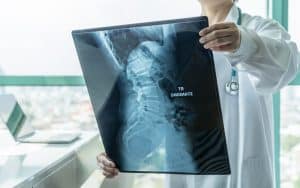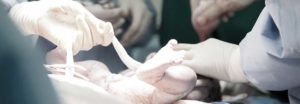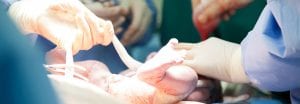
A group of scientists at UCL have succeeded in developing mechanical force sensors directly in the developing brain and spinal cord of chicken embryos. The researchers hope that this will lead to a better understanding and prevention of birth defects such as spina bifida. The study, published in Nature Materials and carried out in collaboration with the University of Padua and the Veneto Institute of Molecular Medicine (VIMM), uses innovative biotechnologies to measure the mechanical forces exerted by the embryo during its development.
Research Could Help Prevent Congenital Malformations Such as Spina Bifida
These forces are crucial for the formation of organs and anatomical systems, such as the formation of the neural tube, which gives rise to the central nervous system. Around one in 2,000 newborns in Europe is affected by congenital spinal cord malformations every year. Although these malformations have been researched for decades, they cannot be fully explained by molecular and genetic studies alone. Therefore, researchers are now investigating the physical and mechanical forces in the tissue during embryonic development. However, this can be a challenge as the embryonic spinal cord is tiny – too small to be seen with the naked eye – and extremely sensitive. Force measurement devices must therefore be similarly small and soft so as not to interfere with normal growth.

To overcome these difficulties, the researchers 3D printed tiny force sensors (about 0.1 mm wide) directly into the developing nervous system of chicken embryos. These force sensors initially consist of a liquid that is applied directly to the developing embryos. When exposed to a strong laser, the liquid transforms into a feather-like solid. This solid adheres to the growing spinal cord of the embryos and is deformed by the mechanical forces generated by the embryo’s cells. In this way, they were able to measure the tiny forces – about a tenth of the weight of a human eyelash – that embryos have to exert to form the spinal cord. For normal embryonic development, these forces must be greater than the opposing negative forces.
Quantifying the forces would allow researchers to explore drugs that increase the positive forces sufficiently or decrease the negative forces to prevent congenital malformations such as spina bifida. Such drugs could also complement the benefits of folic acid supplement ation – a proven strategy for preventing developmental problems before and during pregnancy. Lead author and Marie Sklowdowska-Curie postdoctoral fellow Dr. Eirini Maniou (UCL Great Ormond Street Institute of Child Health and University of Padua) states that thanks to the use of novel biomaterials and advanced microscopy, this study promises to be a game changer in the field of embryonic mechanics, laying the foundation for a unified understanding of development. This work paves the way for the identification of new preventive and therapeutic strategies for central nervous system malformations.
The research group has also shown that the same technology can be applied to human stem cells that develop into spinal cord cells. In the future, this would allow a comparison between the stem cells of healthy donors and those of patients with spina bifida to understand why some people develop the disease. According to study co-author Dr. Gabriel Galea, this technology is very versatile and applicable in many areas of research, and it is hoped that it will be quickly adopted and applied by other groups to address fundamental questions. According to the experts, this discovery not only provides a better understanding of the mechanical forces at work during embryonic development, but also offers new perspectives for the intervention and prevention of diseases such as spina bifida.


